The Burrow
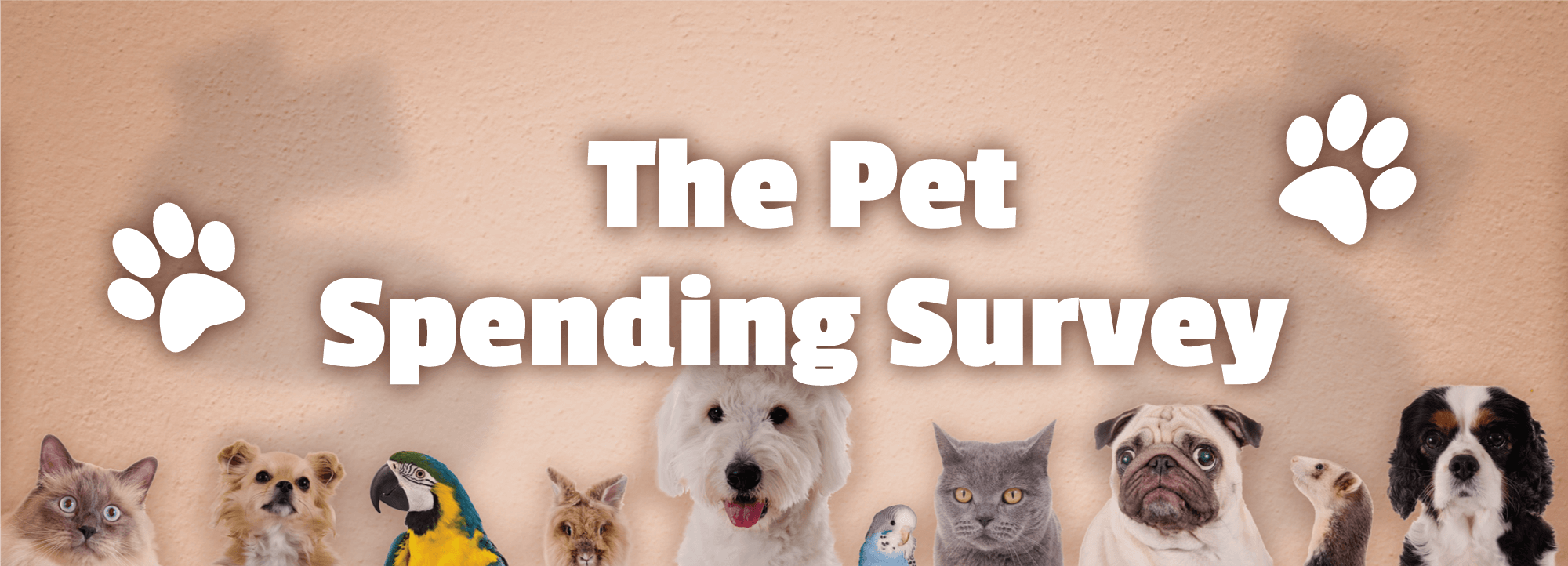
Pets enrich our lives with their companionship, and for many people their ‘fur babies’ are a member of the family and equally important as any human being.
But how much do our beloved pets cost us?
To find out, Compare the Market surveyed over 3,000 Australian, Canadian and American adults to find out what pets people have, how much we spend on them and how many people have them covered by insurance.
Pet insurance is very similar to health insurance for humans; it helps cover the cost of medical care and veterinary surgery or treatment if your animal becomes sick or injured. Typically, it’s only available for cats and dogs (which are the most common type of animal people keep as household pets), but there may be specialty insurance providers who cover other animals as well.
The reason most people get pet insurance is because vet care can be very expensive. Insurance can help with surgery and treatment costs, which can give pet owners peace of mind knowing that if something does happen to their fur baby, then they are financially covered.
Of course, the exact type of covered treatments, conditions, payout limits and other features will vary between different policies and insurance providers. It’s important to read through the details of the policy in the Product Disclosure Statement (PDS) before you buy, and to compare pet insurance to weigh up your options.
Here’s what our survey found.
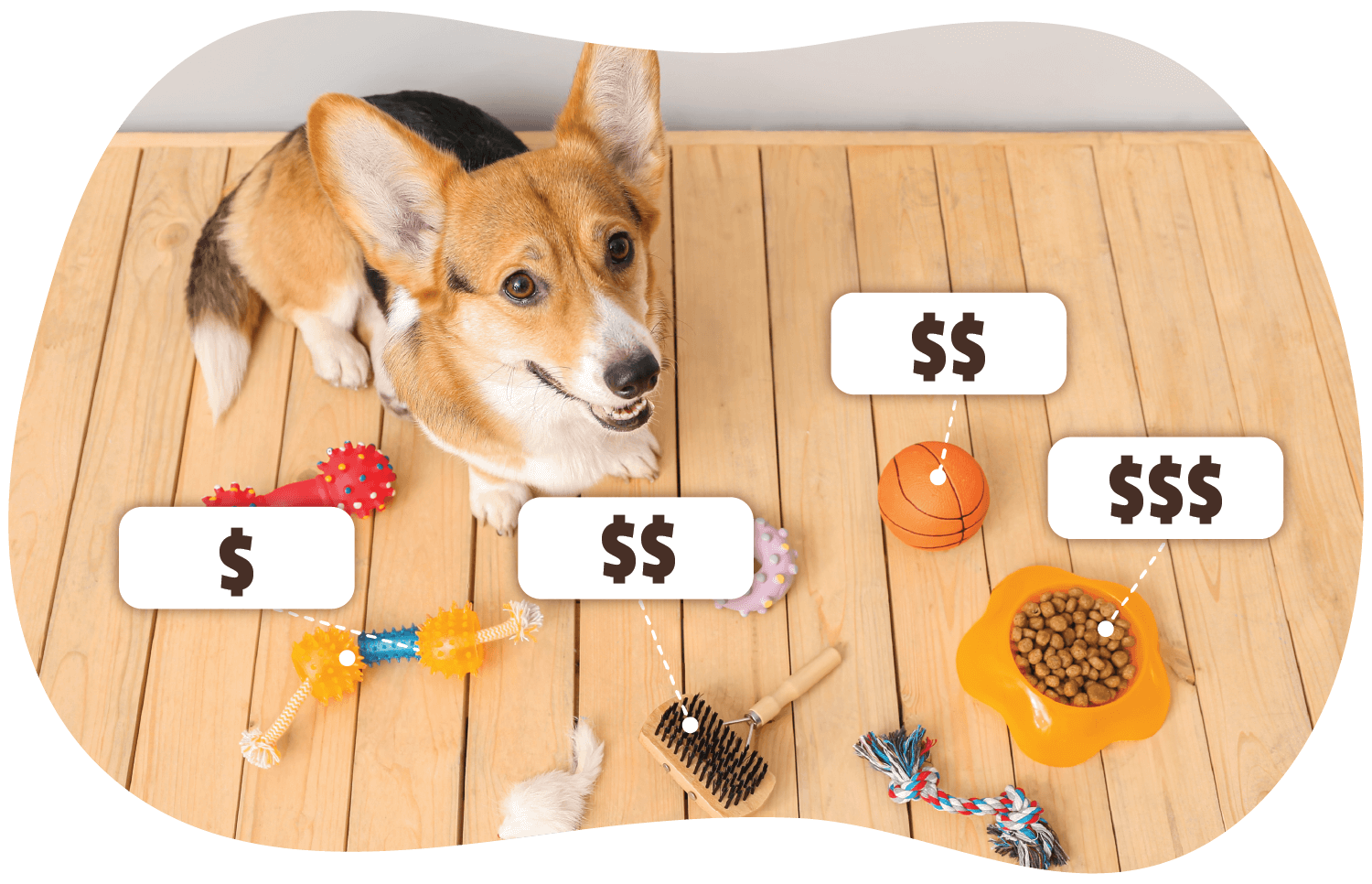
Of all the expenses Compare the Market asked about when it comes to our pets, Australian pet owners are spending less than American and Canadians.
USA pet owners spend the most on pet food, paying an average of US$91 per month (AU$140), followed by pet owners in Canada who spend US$72 per month (AU$140), and Australian pet owners spending US$57 (AU$87).
American pet owners are also the biggest spenders when it comes to pet insurance, paying an average of US$600 per year (AU$925). Conversely, Canadian pet owners spend US$564 per year (AU$872) and their Australian counterparts spend an average of US$418 (AU$644) on pet insurance.
Pet owners in Canada spend the most on medications and vet bills, spending an average of US$491 per year (AU$761), compared to Americans (US$440 / AU$677) and Australians (US$427 / AU$657). Canadian pet owners also have the deepest pockets when it comes to accessories like bedding, enclosures, toys, harnesses and leads. In total, Canadians spend an average of US$732 on accessories (AU$1,132) across a pet’s life, followed by Americans at US$715 (AU$1,101) and Australians at US$662 (AU$1,019).
Across each of the three countries, the youngest generations spend the most pet food. Beyond that, there were different age groups spending the most across the different spending categories.
For example, those aged 45 to 54 spend the most on medication in Australia, whereas it was Canada’s elderly pet owners aged 65 and above who pay the most for their pet’s healthcare needs.
We breakdown how much different age groups of pet owners are spending on their pets every year below for each country surveyed.
While Australian millennials (25-to-34-year-olds) pay more for pet food per month and have spent more on accessories, Generation X pay more for medication, vet bills and pet insurance. The yearly spending by age group (which excludes the total amount spent on accessories) is shown in the chart below.
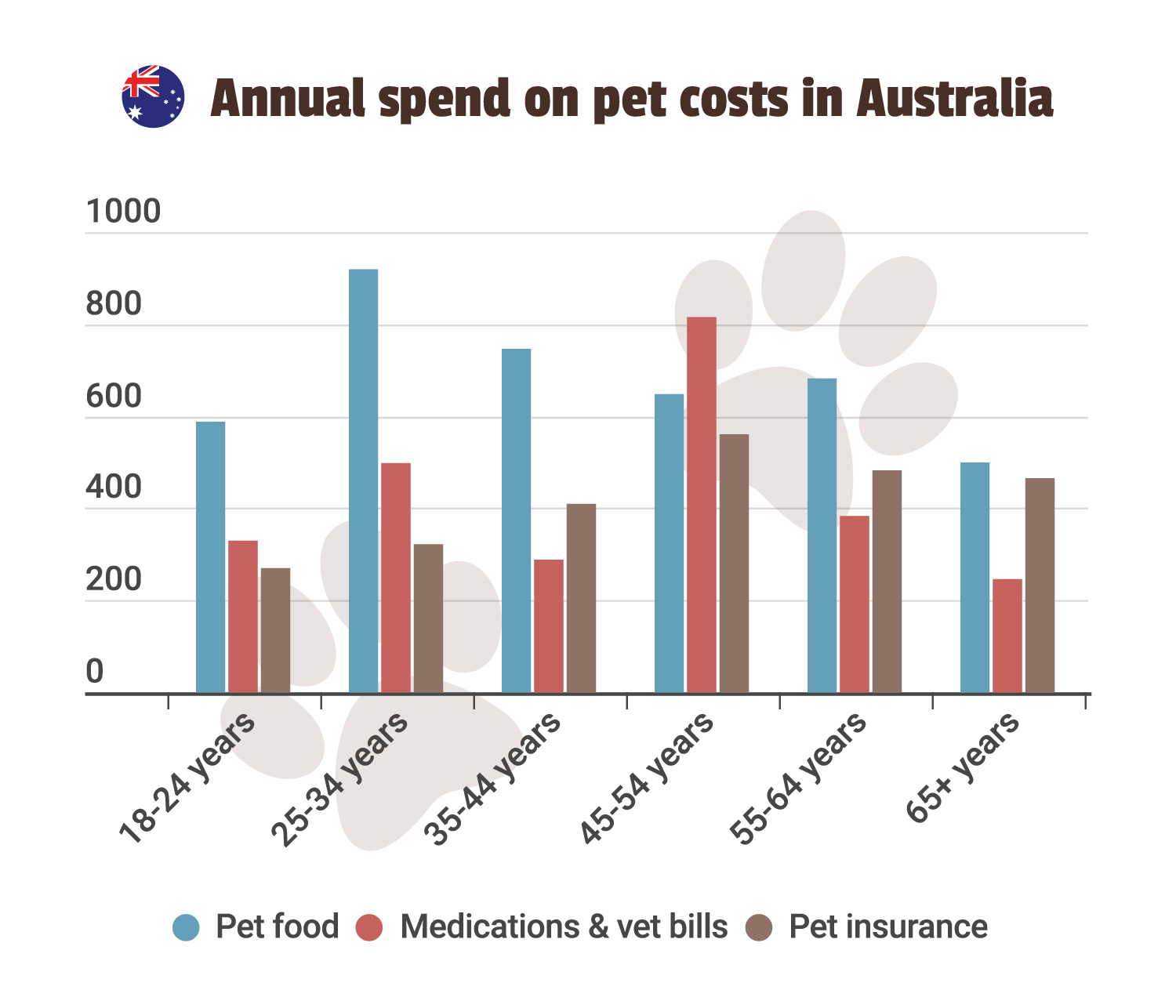
When it comes to the total spend on accessories, it’s Millennials and Generation Z that actually spend the most, with Generation X close behind.
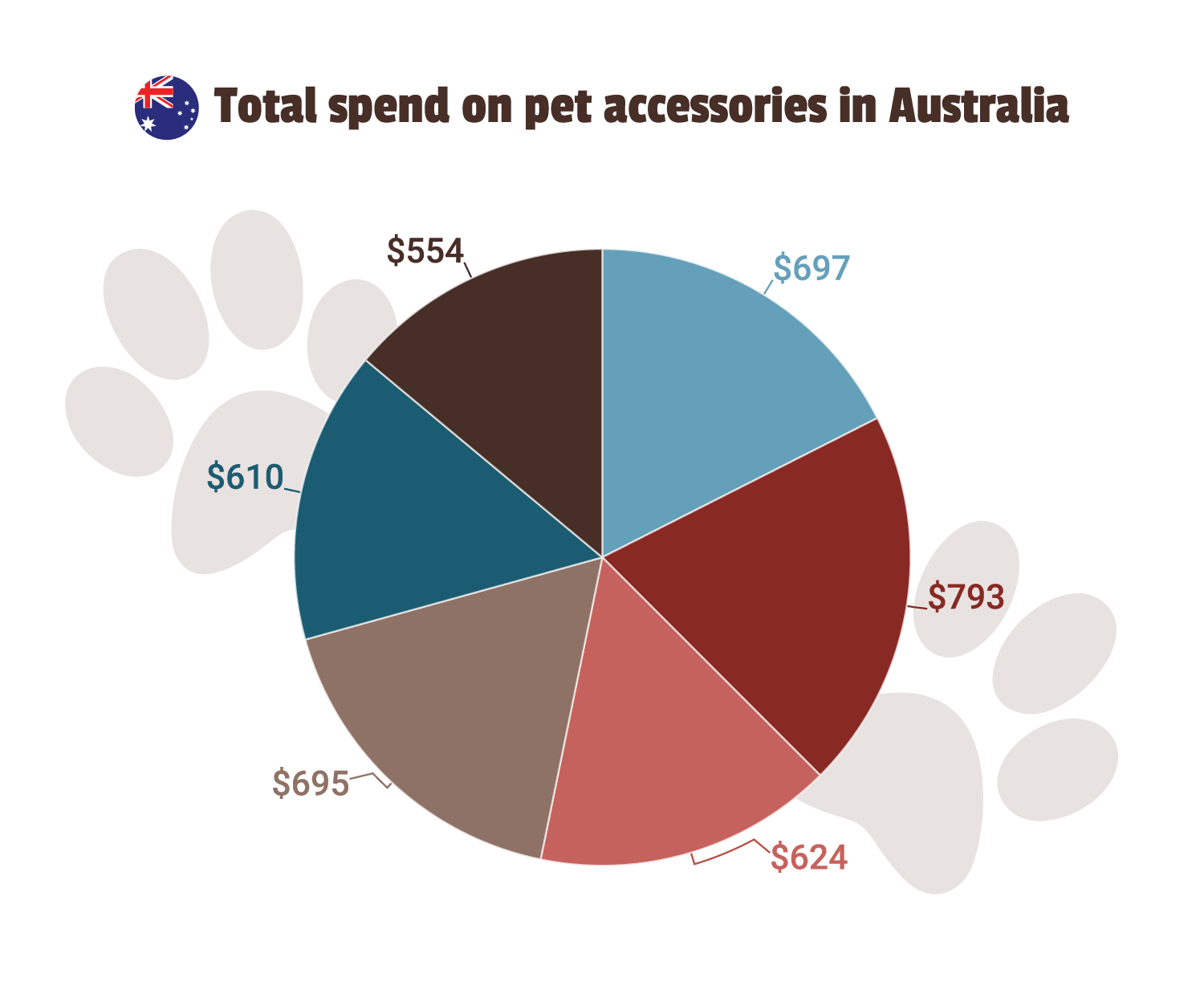
Similarly to Australia, it’s the younger generations who spend more per year on pet food, with 18-24-year-olds spending over US$1,061 per year (AU$1,642) on animal feed for their pets. They also spend the most on pet insurance, spending US$1,115 (AU$1,726) on average for pet cover. In contrast to Australia, it’s the oldest Canadian pet owners (aged 65+) who spend the most on their pets’ healthcare needs and vet bills, paying US$659 (AU$1,020) on average per year.
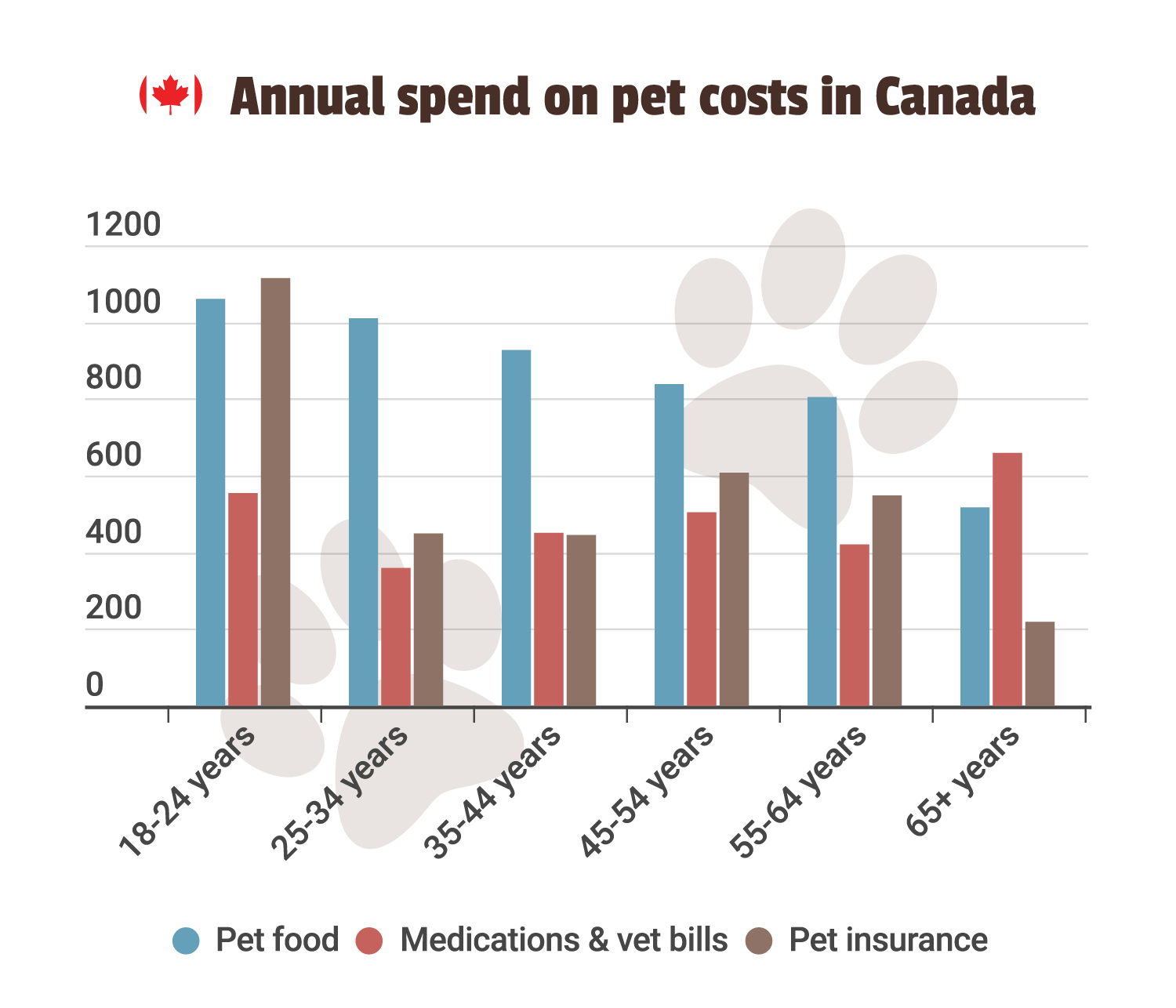
When it comes to the total amount spent on accessories, it’s again the younger generation of pet owners who spend the most, with Canadians aged 18-24 having spent almost US$1,000 on average (just over AU$1,460).
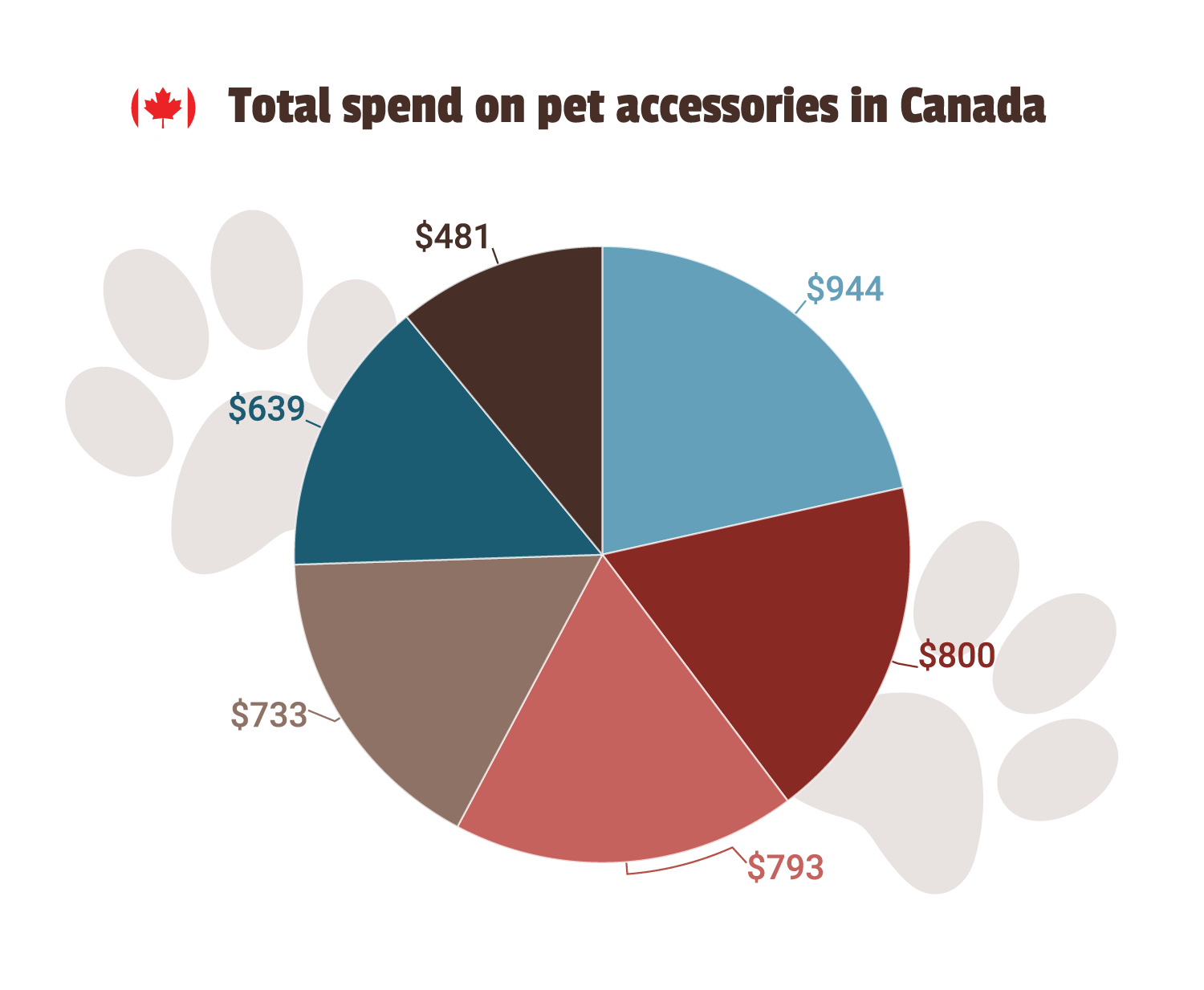
In America, the millennial generation spends the most on pet food, as well as medications and vet bills, spending US$1,695 on food (AU$2,611) and US$605 (AU$931) on pet healthcare per year. However, pet owners aged 55 to 64 are the ones who spend the most on pet insurance, paying an average of US$1,083 ($1,668) annually to cover their beloved pets.
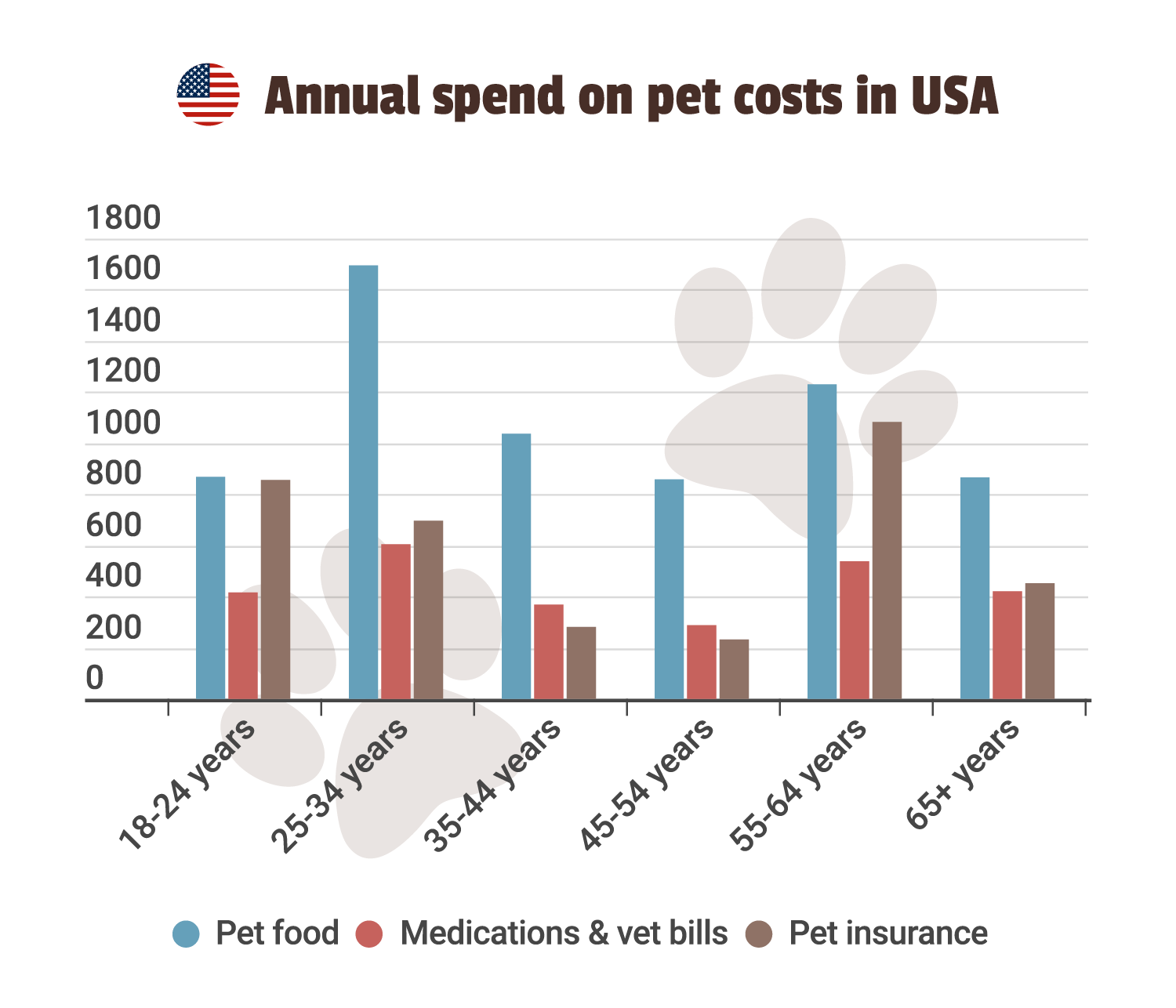
When it comes to how much people had forked out for pet accessories, pet owners aged 45-54 take the lead, having spent an average of US$881 (AU$1,357) for bedding, enclosures, toys and other accessories.
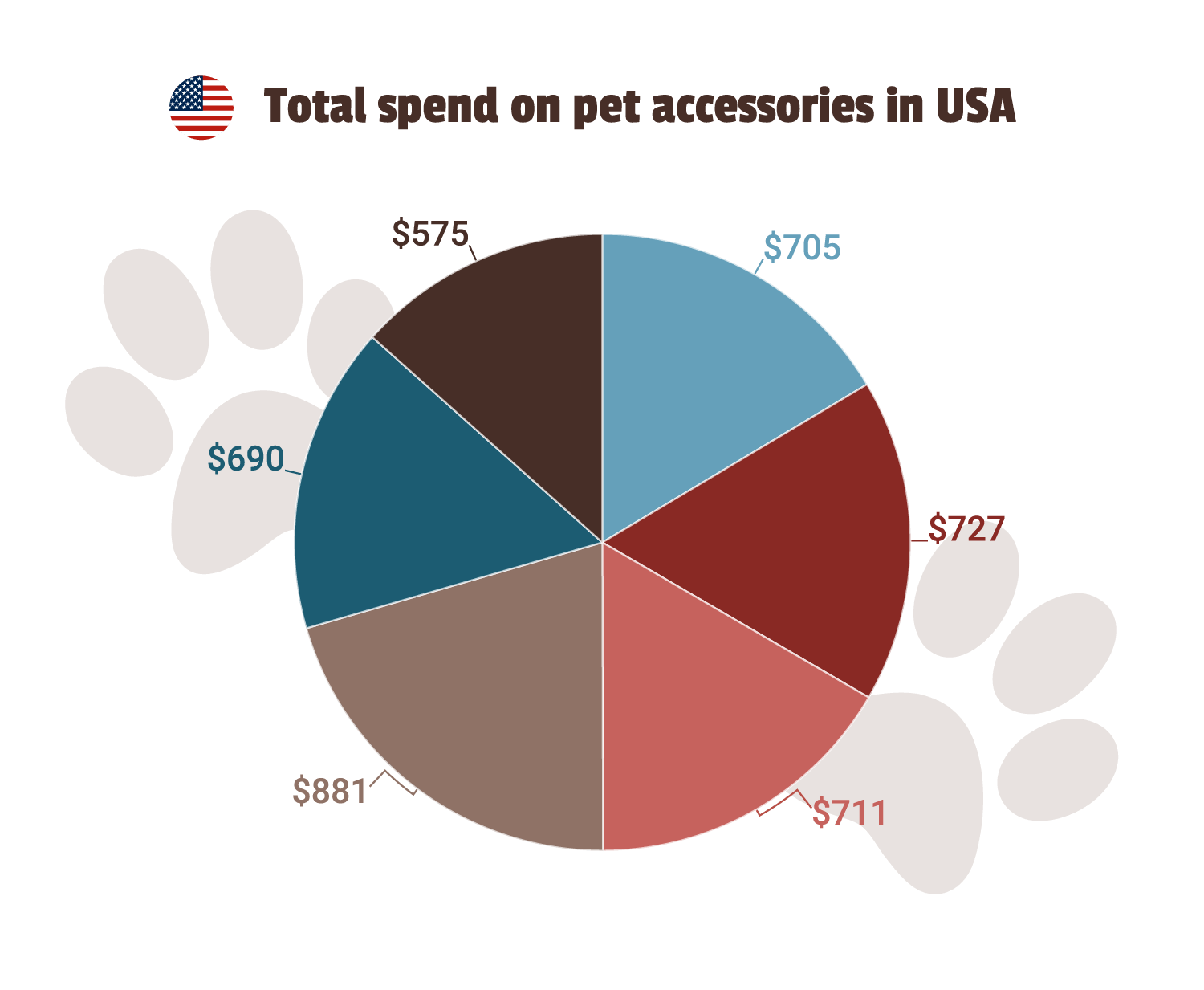
Australian female pet owners spend more on average than men in all areas except pet insurance. Men spend US$42 (AU$64) more per year on cover than women, but US$195 (AU$300) less on accessories, US$271 (AU$417) less per year on vet bills, and US$11 (AU$17) less on pet food each month.
Canadian pet owners, however, didn’t quite follow Australia’s example. Male Canadian pet owners paid more for pet insurance – US$59 (AU$92) per year, and had spent US$1,471 (AU$2,277) more on average than women for their pet houses, toys and accessories. Female Canadian pet owners paid US$15 (AUD$24) more per month on pet feed and US$269 (AUD$417) more per year on vet appointments and pet prescriptions.
There was a clear divide among the sexes with USA pet owners. Female American pet owners seemed to have deeper pockets for their pets, paying more than men for every expense surveyed. Women spent an average of US$296 (AU$456) more per year for pet insurance, an extra US$152 (AU$234) per year for vet bills and medication, and US$223 (AU$343) on average more for accessories.
Of the pet owners we spoke to, dogs were the common companion, followed by cats – a consensus that was common across all three countries. Fish were the third most popular animal to keep as a pet.
Less commonly, there were owners of birds, lizards, horses and rabbits, among other exotic animals.